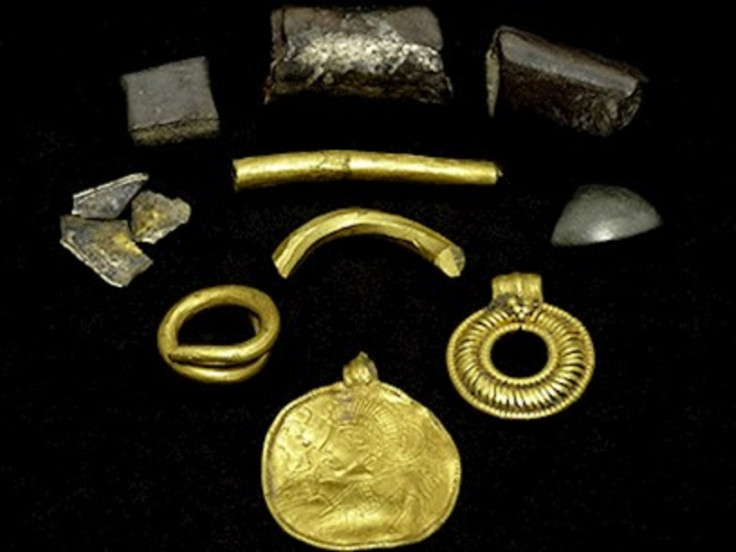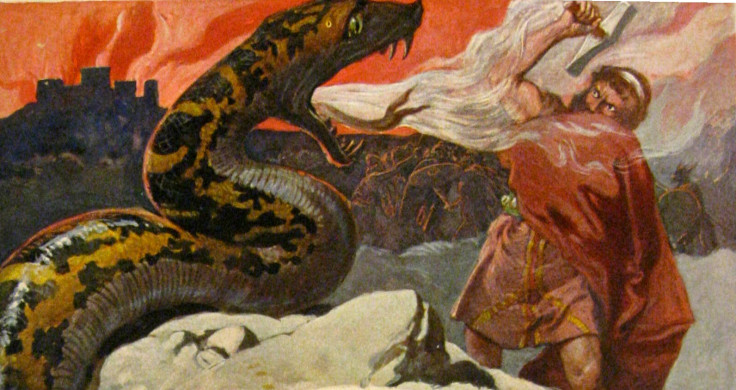This rare gold amulet was sacrificed to protect Vikings against the end of the world
The 1,500-year-old relic bears the face of the terrible god Odin, a pillar of Norse mythology.

A gold amulet bearing the face of Viking god Odin has been discovered on the Danish Island of Lolland. It could be as old as 1,500-years-old and may have been offered as a sacrificial present to the deities sometime around 536AD.
The amulet was discovered by local treasure hunter Carsten Helm, helped by his two young sons. The object constitutes a small, decorated gold disk which could be carried by its owner around the neck on a cord or small chain.
The find is all the more precious that it is rare. Only two amulets of this kind have been recovered on Lolland – the latest in 1906 – and only about 1,000 in the whole of Northern Europe.
The decorations on the disk appear to represent a large man's face, hovering above a horse. He is thought to be Odin, the god of war and the king of Asgard, the home of one tribe of deities in Norse mythology.
Archaeologists at the Museum Lolland-Falster have reached this conclusion because similar manly figures have been identified on other artefacts with the runic inscription for the words "The High One", one of Odin's nickname.
Odin the horse healer
Finding a 1,500-year-old amulet with Odin on it is particularly exciting because it represents one of the earliest depictions of Norse religion. One interpretation of this particular representation of the god with a horse is that it refers to Odin's magical abilities as a healer of sick horses.
"The most detailed gold artefacts see Odin with a horse, where he puts his hand on the animal's shoulder, while his one foot touches its one front leg," says Museum Lolland-Falster spokeswoman Marie Brinch.
"In this part of the Iron Age, the horse has been a valuable and important means of transportation, so it makes sense that people would have sought the gods help to avoid that the animal should get damages. It tells us something about how Iron Age humans related to their world and their gods, and how to use magic."
The end of the world

Not far from the amulet, a gold pendant, three severed gold pieces and pieces of silver were unearthed. Although it is not clear whether all these objects were left by a same person, the hypothesis is that they were all offered as part of a sacrifice to the gods, around 500AD.
Read more:
Norse Mythology and Volcanoes: Vikings, Fire Gods and Screaming Zombie Dwarfs
Apocalypse Now: If our world collapses, we can survive 55 years on supermarket food
Massive Viking axe found in 'death house' tomb belonged to great warrior
Historical sources refer to extreme weather events that might have occurred in 536AD, producing a long period of reduced sunlight and a cold climate that would have caused many problems for the Vikings living in northern Europe.
"Such an event has certainly made people afraid. The harvest has failed, and neither humans or animals have been able to get enough to eat. In such desperate times it was natural to call upon the gods for help by sacrificing as many victims as could be – with as many precious objects as possible. The event has been traumatic for the survivors, perhaps we can find traces of the idea of Ragnarok – the end of the world according to Norse mythology", says Brinch.
It is possible that the gold relics, including the amulet, might have been part of sacrifices conducted to make the Sun come back and to end the period of terrible weather which might have looked like the end of the world for Vikings.
© Copyright IBTimes 2025. All rights reserved.






















